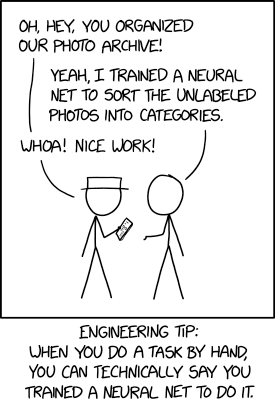Isn't this pretty cool?
It certainly helps me filter between all of the sets even better. And the best part? While I'm pretty happy with the implementation I've got right now I'll tweak it as I learn even more about our community, so this feature will get better and better over time. Maybe some day I'll be able to build an AI, but for now I have to rely on a basic neural network implementation.
If you're technically and/or linguistically inclined you might already say But Linus! There are tools for textual analysis that does this programmatically! And you're right! There is! I wrote my bachelor's thesis on textual analysis, and it's an incredibly exciting area. I'm playing around with a few tools to see if I can improve on our data, but so far I haven't managed to figure out a reliable enough implementation. Stay tuned for that!
For now, my manual gatekeeping will have to do. Keep calm and brick on!



